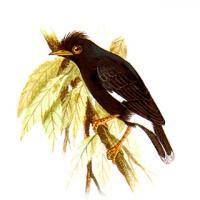Dorcus Grandis

The Dorcus Grandis is found in regions such as Laos, Cambodia, Vietnam, China, Myanmar, and India. The Grandis beetles from Laos, China, and Vietnam have a prothorax known as the "G-type," while those from India and Myanmar are referred to as the "Kurubi type." There are individual differences depending on the region.Males are generally very docile, and female-killing is rare. The most challenging aspect of keeping this species is egg-laying. Once a female begins to lay eggs and burrows into the substrate, she often does not come back to the surface for more than a month. Since egg-laying is drawn out over an extended period, it is better to wait about three months before retrieving the eggs rather than doing so after just one month.
When setting up the breeding period, it’s essential to consider that the Grandis stag beetle has a robust internal clock. The habitat of the Grandis beetle in places like Laos and Cambodia experiences sudden heat waves that make it feel as if summer has arrived in April. It might be worth setting up your breeding schedule to align with that timing.
Egg-laying numbers for this species are typically lower than those of other types, and it is still traded at relatively high prices. In particular, Grandis beetles from India and Myanmar are highly valued. It is important to note that placing a female in the egg-laying substrate immediately after pairing can be risky. This might be comparable to morning sickness in humans, as females often appear weak and stagger around after mating. Ensure the female has plenty of food and monitor her condition before introducing her to the egg-laying setup.
For the egg-laying setup, place at least two thick egg-laying logs. Females of the Grandis species are highly selective about the wood, so care is needed. Fermented substrate seems to work best. According to examples from this page, females have also laid eggs in the substrate, so it’s advisable to pack the substrate slightly firmer. Position the logs so they stick out slightly from the substrate.
The optimal temperature for egg-laying is around 23°C. The larvae can grow in either substrate or fungal cultures, but they tend to grow larger in a shorter period when raised in fungal cultures. With proper temperature control and suitable food, the larvae can be raised relatively easily.
Many people still face challenges when breeding Grandis stag beetles, but it’s common to see impressive males emerge, measuring over 80 mm. This species continues to show potential for growth, which inspires hope and fascination among breeders.




























